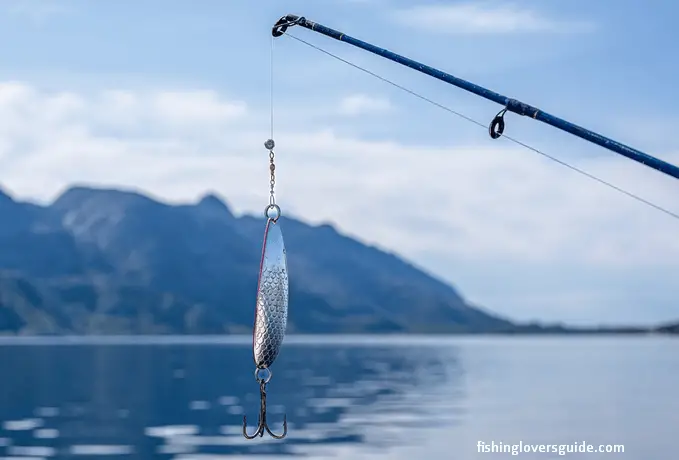Fishing hooks are made through a process involving molding or forging metal into a desired shape. Fishing hooks are essential tools used by anglers to catch fish.
Whether you are a professional angler or a recreational fisherman, understanding what is hooks and how fishing hooks are made can provide valuable insight into their design and effectiveness. The manufacturing process begins with the selection of the right type of metal, typically steel or high-carbon steel.
This metal is then heated and molded or forged into the desired shape using specialized machinery. The hooks are then tempered to give them the necessary strength and flexibility. Finally, they undergo a finishing process, which may include treatments such as chemically etching, plating, or coating for enhanced durability and corrosion resistance. By delving into the intricacies of hook production, we can gain a deeper appreciation for these seemingly simple yet highly effective fishing tools.
Importance Of Fishing Hooks
Fishing hooks are a vital tool in the angler’s arsenal, and understanding their importance is crucial for successful fishing. These small but mighty devices play a crucial role in hooking and landing fish. The introduction of fishing hooks dates back centuries, evolving from primitive designs to highly specialized, skillfully crafted tools. Today, modern fishing hooks are manufactured using advanced techniques and materials that are tailored to specific fishing needs. Crafting superior quality hooks is essential for several reasons. Firstly, the durability and strength of the hook ensure it can withstand the intense pressure and fight of a fish, preventing it from bending or breaking.
Secondly, a sharp and correctly shaped hook increases the chances of hooking the fish effectively, reducing the risk of it escaping. Additionally, superior quality hooks are designed to minimize harm to the fish, enabling catch-and-release fishing practices that promote sustainable angling. In conclusion, hooks are an underestimated but crucial component of successful fishing. Understanding the importance of these tools and the significance of crafting superior quality hooks can enhance your fishing experience and contribute to the conservation of fish populations.
Step-by-step Process Of Making Fishing Hooks
Fishing hooks are an essential tool for any angler, and understanding how they are made can provide insight into their quality and durability. The process of making hooks involves several steps:
| Choosing the right material for making fishing hooks |
| The first step in making fishing hooks is selecting the appropriate material. Hooks can be made from various metals, including stainless steel, carbon steel, and even titanium. The material chosen will depend on factors such as the type of fish being targeted and the fishing conditions. |
| Forging the hook shape |
| After selecting the material, the hook shape is forged. This involves heating the material and shaping it using a combination of force and precision. The goal is to create a shape that provides optimal hooking efficiency. |
| Heat treatment for increased strength |
| To enhance the strength and durability of the fishing hooks, they undergo a heat treatment process. This process involves subjecting the hooks to high temperatures to alter their molecular structure, resulting in increased hardness and toughness. |
| Shaping barbs and points |
| Once the hooks have been forged and heat-treated, the barbs and points are shaped. This step is crucial, as it ensures that the hooks can effectively penetrate the fish’s mouth and securely hold it. |
| Applying protective coatings |
| To protect the hooks from corrosion and increase their longevity, various protective coatings can be applied. These coatings may include plating, galvanization, or even specialized coatings designed for specific fishing environments. |
Quality Control And Testing Of Fishing Hooks
Inspecting for imperfections: To ensure the highest quality, fishing hooks undergo a meticulous inspection process. Each hook is carefully examined for any imperfections such as rough edges or incorrect shaping that could impact its performance. This step is crucial to eliminate any potential defects before the hooks are further tested. Strength testing: Strength is a crucial aspect of a hook. The hooks are subjected to rigorous strength testing to determine their capacity to withstand the force exerted by fish.
This testing involves applying increasing levels of tension to assess the hook’s durability and ability to handle different fish sizes and species. Sharpness testing: Fishermen rely on sharp hooks to ensure successful baiting. Therefore, hooks are tested for sharpness to guarantee their effectiveness.
A specialized device measures the hook’s penetration into various materials, determining its sharpness and potential for easy and efficient penetration into a fish. Performance evaluation: The performance of hooks is evaluated based on various factors such as durability, strength, and sharpness. Hooks that meet the required standards consistently deliver better fishing results. The evaluation process helps manufacturers identify any areas for improvement and make necessary adjustments to enhance the overall performance of their hooks.
FAQs For How Fishing Hooks Are Made
How to Make Fishing Hooks ?
Fishing hooks are typically made from high-carbon steel wire that is shaped and sharpened using specialized machinery. The wire is first cut to the desired length and then bent into the shape of a hook. The hook is then heated and tempered to increase its strength and durability.
Afterward, the hook is coated with a protective finish to prevent rusting and improve its longevity.
What Size Fishing Hook Should I Use?
The size of the hook largely depends on the target species and the bait being used. Smaller hooks, such as size 6 or 8, are suitable for small fish and finesse fishing. Medium-sized hooks, like size 2 or 4, can handle a variety of fish species and bait.
Larger hooks, such as size 1/0 or 2/0, are ideal for bigger fish and heavier bait. It’s important to match the hook size to the species you are targeting to ensure a proper hook set and successful catch.
Last Word
After delving into the fascinating world of hooks and exploring their intricate manufacturing process, it is clear that each hook is carefully crafted to provide fishermen with optimal performance. From the selection of high-grade materials to the precision of the manufacturing techniques, every step plays a crucial role in creating hooks that can withstand the tests of time and nature.

